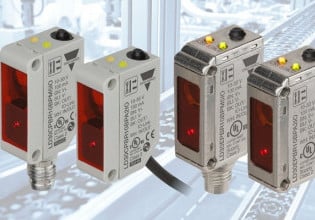Defining Greenfield vs. Brownfield: The Challenges of Creating Smart Factories
What does it mean for a factory to be greenfield or brownfield?
What do the terms “brownfield” and “greenfield” mean in the context of industrial control?
Defining Brownfield and Greenfield
The terms brownfield and greenfield refer to how old a particular type of infrastructure is. This terminology is useful across many industries, including investments and cybersecurity, where a pre-existing infrastructure may either help or hinder updates.
In terms of smart factories, brownfield implies that there exists a pre-existing infrastructure, usually a physical manufacturing facility.
Greenfield, then, means that the manufacturing facility, itself, is new. This allows for modern technologies to be “baked into” the basic functionalities of the facility, rather than added on top or used to replace existing technologies.
You’ll immediately notice that the terms greenfield and brownfield are relative. Basically, as soon as a greenfield facility is built, it enters a state of becoming brownfield as technologies advance around it.
The Challenges of Brownfield
Brownfield facilities often stay brown because they’re either large in size (both in terms of physical space and in terms of complexity) or because they represent a high risk to a crucial system. An example of the latter situation may be a power grid that is difficult to upgrade, even piecemeal, because it supports necessary utilities.
Combine this with the fact that facilities often rely on third-party contractors for maintenance and troubleshooting and you have a recipe for a difficult shift from platform to platform, let alone from technology paradigm to technology paradigm.
The process of upgrading a brownfield facility can look like many things. One of the easiest examples to envision is the introduction of node sensors. IoT sensors can be placed throughout facilities for environment monitoring (temperature, pressure, air quality, etc.). This can result in a much clearer idea of the state of a facility without needing to manually gather and process sensor data. (Of course, we’ll here conveniently ignore the challenges of finding sensors and communication protocols that can adequately function in noisy industrial environments.)
Another example may be the integration of AI into monitoring systems wherein machine vision is utilized to do quality control or check for process issues.
The Challenges (and Promise) of Greenfield
The process of kickstarting greenfield facilities also faces challenges. Part of the challenge associated with greenfield facilities is the risk of introducing unknowns into plant-wide applications.
That being said, the benefits of integrating new technologies are many. The most salient example of this is the advent of the IIoT or industrial IoT. Inherent to the idea of the IIoT is the concept of connectivity. This connectivity can mean faster, more reliable data transfers.
Along with this connectivity, however, comes one of the most important challenges facing greenfield facilities: cybersecurity.
Cybersecurity has not been a major concern for controls engineers in decades past. After all, the only communications that were taking place were occurring within the same facility, usually between machines on the same floor.
Designing secure systems for industrial applications is a burgeoning field that has a lot at stake. Imagine that same example power grid facility and the ramifications of it being vulnerable to outside parties gaining access to its systems.
What’s your experience in dealing with greenfield facilities? For those engineers dealing with brownfield facilities, what are the anxieties you face when considering updates? Share your thoughts in the comments below.






